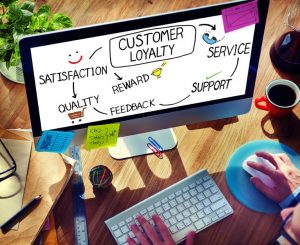Spotting the return of a long-lost customer
Virtually every business will have customers who buy from them from time to time. In some cases the time period between purchases can run into months and even years. The longer the time-frame the harder it is to determine whether that customer is still current or indeed lost.
When does a returning customer become new?
 So what happens when that customer returns after, let’s say, 2 years? Does the business count them as an existing customer (and serve up appropriate messaging welcoming them back), or count them as a new customer (and serve up different messaging that indicates they’re new)?
So what happens when that customer returns after, let’s say, 2 years? Does the business count them as an existing customer (and serve up appropriate messaging welcoming them back), or count them as a new customer (and serve up different messaging that indicates they’re new)?
Many organisations we speak with recognise that the longer the lapsed period, the harder it is for them to spot when a long-lost customer returns. This is particularly true as organisations are more cautious over the length of time they keep data and what they do with it. It also becomes difficult as organisations change the cookies and cookie policies for their website.
What if the customer doesn’t think they’re lapsed?
 It’s also worth emphasising that, in the customer’s mind, they may not have gone away. They may have in fact not needed to replace or purchase again from the seller’s offering until now. They in fact have remained very loyal to the seller since their last purchase and are now returning when they have a need again. Which is why it is important to serve up messaging along the lines of ‘Hey it’s great to have you back in touch’, rather than ‘Well hello there! Who are you?’ – particularly if you want them to purchase from you again.
It’s also worth emphasising that, in the customer’s mind, they may not have gone away. They may have in fact not needed to replace or purchase again from the seller’s offering until now. They in fact have remained very loyal to the seller since their last purchase and are now returning when they have a need again. Which is why it is important to serve up messaging along the lines of ‘Hey it’s great to have you back in touch’, rather than ‘Well hello there! Who are you?’ – particularly if you want them to purchase from you again.
A great example of this could be furniture retailers, people do not tend to buy sofas or tables on a regular basis and the time between purchases can be years. However, this probably can also be relevant in Fashion, recently we worked with a brand who sold satchels. 90% of their customers would only ever buy once, as once you have a satchel not many people want another. So for both of these companies they had no real idea of how engaged people remained with the brand.
With businesses recognising the importance of personalisation in marketing, the buying process and the overall customer experience, it becomes imperative for their systems that they can indeed recognise when lapsed customers returns. This recognition also affects the marketing and sales strategies of the business and the resources and messaging they allocate to existing, lapsed and new customers.
Being able to spot the return of a lapsed customer
At Fusion Analytics we’ve been able to help organisations improve their ability in spotting a returning lapsed customer. We do this by:
- Implementing our web tracking solution WebFusion
- Integrating it with offline data sources such as ESP (emails), SCV or even some social channels
- Provide insight into the trends of whether people do come back and how long they stay engaged with the brand after purchase (or initial engagement)
- Implement a communications strategy to target those likely to rebuy
From this we’re able to bring into a single customer-view dashboard what the customer has engaged with. This starts to paint a picture of how active that customer is with the supplier, even though they have yet to purchase again. This insight enables the marketing, sales and customer service teams to create and serve up more relevant messaging, offers and calls to action. These focus on strengthening the relationship further with the customer and encourage a purchase when the customer has a need again.
Time to revisit your lapsed customers
 In an ideal world customers would buy at a regularity an organisation wants, but in reality ‘regularly’ can mean vastly different time frames for different customers.
In an ideal world customers would buy at a regularity an organisation wants, but in reality ‘regularly’ can mean vastly different time frames for different customers.
If an organisation has delivered a good quality product/service at a price the customer likes, and has ensured the buying experience was a positive one, it is highly likely the customer will return. The challenge then is knowing when that return will be as all customers are different. Armed with better tracking and management information, organisations can:
- Avoid coming across as too pushy – putting the customer off by bombarding them with marketing/sales messages when they’re not ready to buy
- Avoid relegating and dismissing customers to the ‘lost’ pile, when in fact they’re still loyal but haven’t a need to repurchase yet.
If your business is at risk of offending customers or missing out on re-engaging with past ones, do get in touch. We can help establish the tracking and management information you need to serve up the right messaging for the right customers, and strengthen their loyalty to you as a result.
